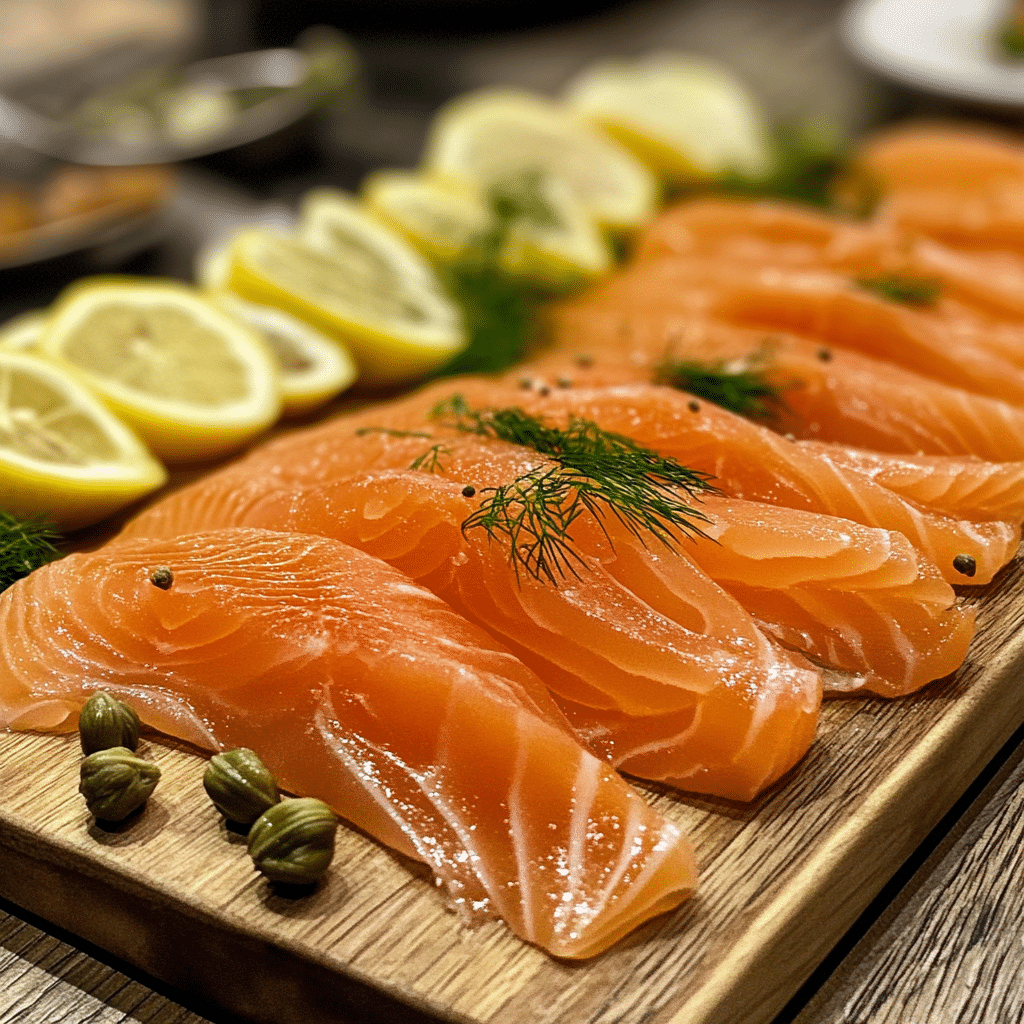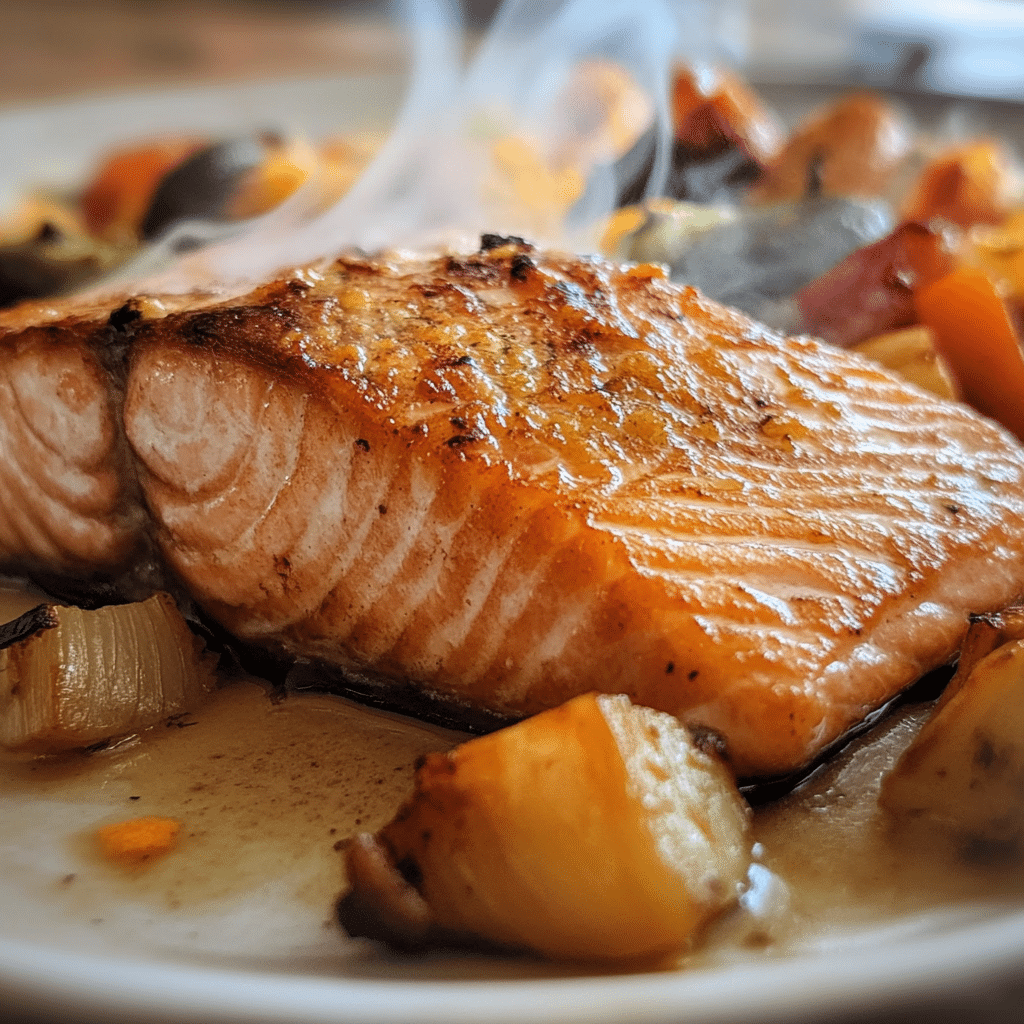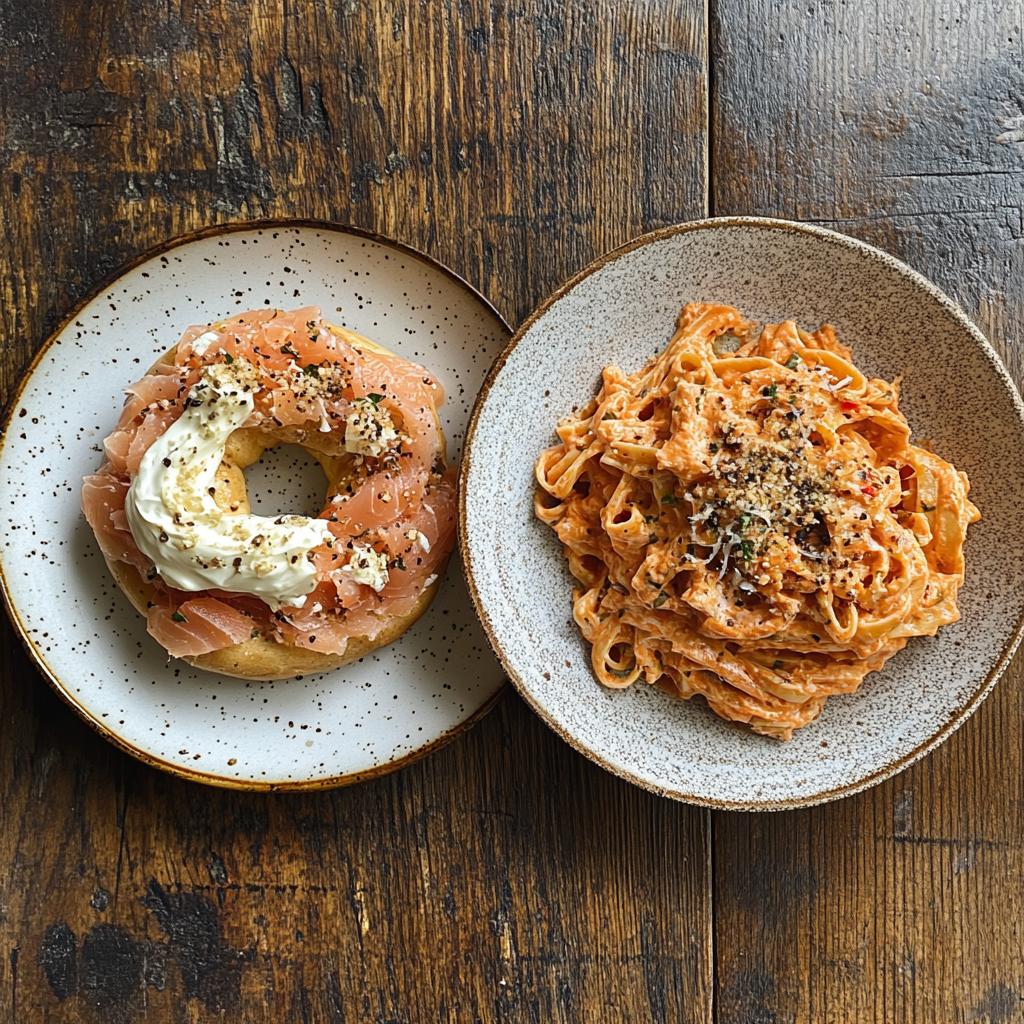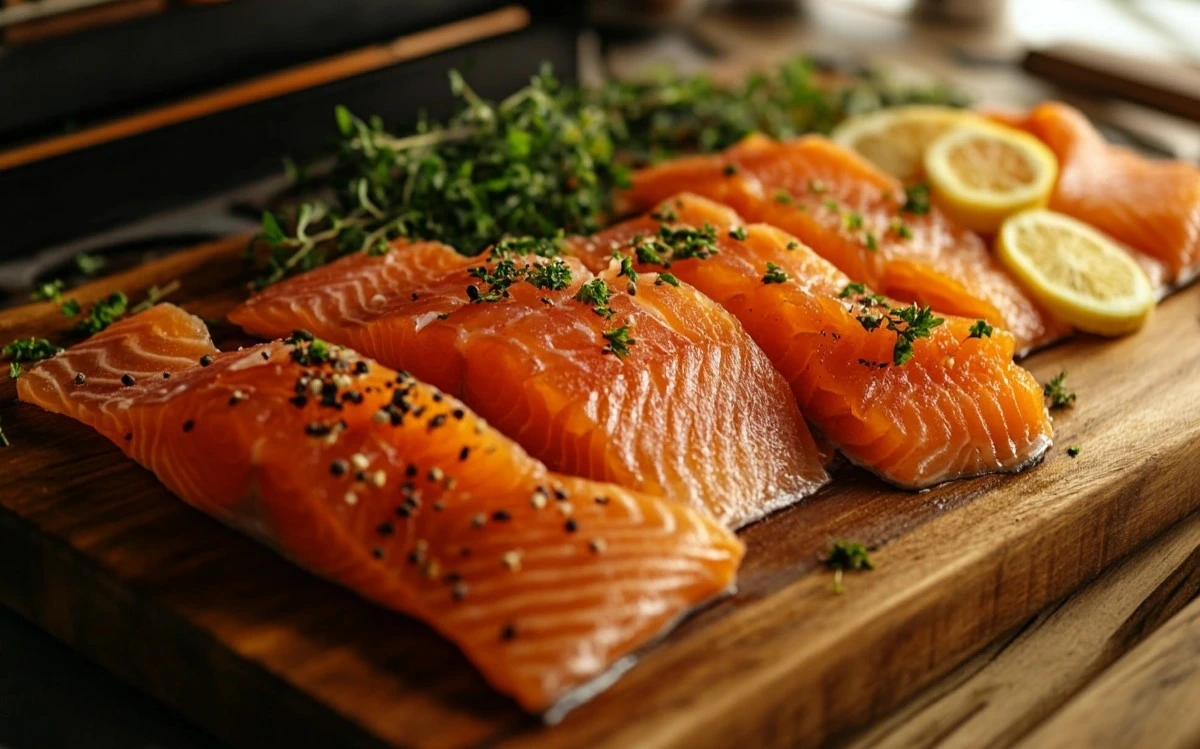Cold smoke vs hot smoke salmon is a popular debate among food lovers. Each smoking technique delivers unique textures, flavors, and uses, but which is better? In this article, we’ll explore the differences, pros, and cons of both cold smoking and hot smoking salmon, so you can decide which method best suits your taste and culinary needs.
What Is Cold Smoking?
Cold smoking is a traditional method where the fish is cured and then smoked at low temperatures—typically between 68°F and 86°F (20°C to 30°C)—without cooking it. The goal is to infuse the fish with smoke while retaining its raw texture.
The Cold Smoking Process
During cold smoking, salmon is first cured with a mixture of salt and sugar. This step draws moisture out of the fish, acting as a preservative and giving the salmon a firm, yet silky texture. After curing, the fish is rinsed, dried, and exposed to cool smoke for a period ranging from 12 to 24 hours. The result is a delicate, smoky flavor that doesn’t overpower the natural taste of the fish.

Unlike hot smoking, this method doesn’t cook the fish, leaving it with a raw-like texture that is prized in dishes like sushi, canapés, and bagels with lox. Cold-smoked salmon pairs wonderfully with fresh ingredients such as cream cheese, lemon, and capers. Its silky texture makes it ideal for light, refreshing dishes.
Why People Love Cold-Smoked Salmon
Cold-smoked salmon delivers a nuanced, subtle smoke flavor, making it perfect for meals where the fish’s natural taste should take the lead. Because it remains uncooked, it pairs well with ingredients that don’t overwhelm its delicate flavor. Cold-smoked salmon is often served in appetizers, salads, and even as a luxurious breakfast option. Bagels with lox and smoked salmon canapés are classic examples of how this method enhances the fish’s delicate flavor profile.
Since the curing process removes moisture, cold-smoked salmon also has a longer shelf life compared to its hot-smoked counterpart. When vacuum-sealed and properly refrigerated, it can last for up to two weeks. This makes it a convenient option for those who want to enjoy smoked salmon over an extended period.
Cold smoking is perfect for anyone who appreciates the natural flavor of the fish and prefers a soft, silky texture that melts in the mouth. Refer smoked salmon guide for smoking techniques.
What Is Hot Smoking?
Unlike cold smoking, hot smoking both flavors and cooks the fish at the same time. The salmon is exposed to higher temperatures, usually between 120°F and 180°F (49°C to 82°C). As the fish cooks, it absorbs the rich, smoky flavor. This method results in a product that is firmer and flakier than cold-smoked salmon.

The Hot Smoking Process
Before hot smoking, salmon goes through a brief curing process where it is coated in a salt and sugar mixture to season the fish and draw out moisture. Once the fish is rinsed, it is placed in the smoker and cooked at a higher temperature, allowing the smoke to penetrate while the fish cooks. This process takes anywhere from 2 to 6 hours, depending on the size of the fillets and the desired level of smokiness.
Since hot smoking cooks the fish, the result is a firm, flaky texture with a stronger, more intense smoky flavor. This makes it ideal for use in heartier dishes where the texture needs to hold up, such as pasta, quiche, or salads.
Why People Love Hot-Smoked Salmon
Hot-smoked salmon stands out for its robust flavor and versatility in cooking. The higher temperature intensifies the smoky taste, making it perfect for dishes that need bold flavors. Because the fish is fully cooked, it is ready to eat straight from the smoker and can be enjoyed warm or cold. Smoked salmon pasta, salmon chowder, and grain bowls all benefit from hot-smoked salmon’s rich taste and flaky texture.
The firm texture of hot-smoked salmon also makes it easy to flake into dishes like salads, scrambled eggs, or even on top of pizza. It pairs well with richer ingredients, such as cream sauces, cheese, and buttery pastries.
Which Offers Better Flavor?
When deciding which method delivers better flavor, it’s important to consider your preferences and the dishes you plan to make.
Cold-Smoked Salmon’s Subtle Flavor
Cold-smoked salmon offers a mild, delicate smoky flavor. The low smoking temperature allows the fish’s natural flavors to shine through, with the smoke acting as an accent rather than the dominant taste. This subtlety makes cold-smoked salmon ideal for dishes where the flavor of the fish should be the star, such as in sushi, salads, or bagels.
People who prefer lighter dishes or enjoy the fresh, raw-like taste of fish often gravitate toward cold-smoked salmon. Its flavor blends well with fresh herbs, lemon, and even mild cheeses.
Hot-Smoked Salmon’s Bold Flavor
Hot-smoked salmon, by contrast, has a strong, pronounced smoky flavor. The higher temperature used in hot smoking deepens the smokiness, making the fish taste heartier. This method is excellent for dishes that require a stronger flavor to stand out, such as in pasta, quiches, or smoked salmon chowder.
If you enjoy bolder, more savory flavors, hot-smoked salmon may be your preferred choice. Its stronger taste pairs well with rich sauces and intense ingredients, making it a versatile option for cooked meals.
Which Method Is Safer to Eat?
Food safety is an important consideration when deciding between cold-smoked and hot-smoked salmon.
Safety of Cold-Smoked Salmon
Cold-smoked salmon retains some of the risks associated with raw fish since it is not cooked during the smoking process. While curing helps to prevent bacterial growth, Listeria monocytogenes can still pose a risk, particularly for vulnerable groups like pregnant women, the elderly, or those with weakened immune systems. To minimize the risk, always buy cold-smoked salmon from reputable sources and store it properly in the refrigerator.
Safety of Hot-Smoked Salmon
Hot-smoked salmon, on the other hand, is fully cooked during the smoking process, which significantly reduces the risk of contamination. The higher temperatures used during hot smoking kill harmful bacteria, making it a safer option for more people.
If food safety is a priority, especially if you are serving smoked salmon to those at risk, hot-smoked salmon is the better choice. You can enjoy it without concerns about raw fish-related illnesses, making it an excellent option for everyone.
Shelf Life and Storage of Cold-Smoked vs. Hot-Smoked Salmon
The method of smoking also impacts how long your smoked salmon will last and how it should be stored.
Cold-Smoked Salmon Shelf Life
Cold-smoked salmon tends to have a longer shelf life due to the curing process, which removes moisture and prevents bacterial growth. When vacuum-sealed and refrigerated, cold-smoked salmon can last for up to two weeks. It can also be frozen for several months without losing much of its delicate texture and flavor.
Hot-Smoked Salmon Shelf Life
Hot-smoked salmon has a shorter shelf life than cold-smoked salmon because it contains more moisture. It should be eaten within a few days of being smoked or frozen for longer storage. Once thawed, it should be consumed promptly to maintain its quality.
Both types of smoked salmon can be frozen, though freezing may slightly alter the texture, especially in the case of cold-smoked salmon. However, freezing is still an excellent option for extending the shelf life of both products.
Best Culinary Uses of Cold-Smoked vs. Hot-Smoked Salmon
Each smoking method lends itself to different culinary uses due to the unique textures and flavors they produce.

Cold-Smoked Salmon Dishes
Cold-smoked salmon’s silky, smooth texture makes it ideal for dishes that don’t require cooking. Some popular ways to enjoy cold-smoked salmon include:
- Bagels with lox: The classic pairing of cold-smoked salmon with cream cheese on a bagel.
- Sushi: Its raw-like texture makes it a perfect fit for sushi rolls.
- Smoked salmon salads: A light, refreshing option where the delicate flavor can shine.
Hot-Smoked Salmon Dishes
Hot-smoked salmon, with its firm, flaky texture, works well in heartier dishes. Some popular options include:
- Smoked salmon pasta: The stronger flavor and texture hold up well with creamy sauces and pasta.
- Salmon quiche: The fish’s firmer texture adds substance to quiches and tarts.
- Grain bowls: Flaked hot-smoked salmon adds protein and flavor to rice or grain bowls.
Conclusion: Is It Better to Cold Smoke or Hot Smoke Salmon?
So, is it better to cold smoke or hot smoke salmon? The answer depends on what you’re looking for in terms of texture, flavor, and how you plan to use the smoked fish in your cooking.
If you prefer a delicate, raw-like texture with a light, subtle smoky flavor, cold smoking is the best option for you. It works well in lighter dishes, such as sushi or smoked salmon canapés, where the fish’s natural taste can be appreciated.
On the other hand, if you want a firmer, fully cooked texture with a bold smoky flavor, hot smoking is likely the better choice. Hot-smoked salmon holds up well in heartier dishes like pasta, quiches, or salads where a stronger flavor is needed.
Both methods have their strengths, and the best choice ultimately depends on your preferences and the dishes you love to create.

